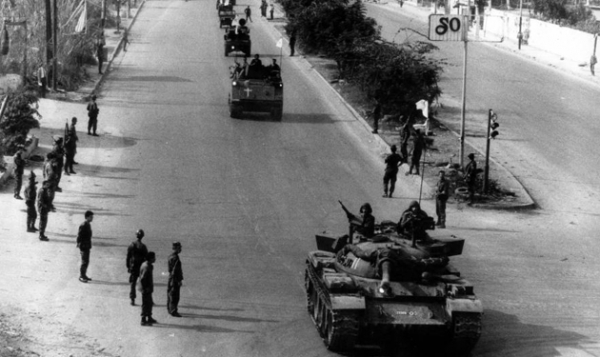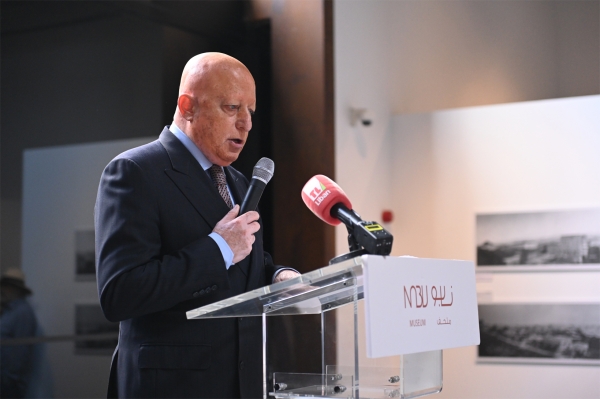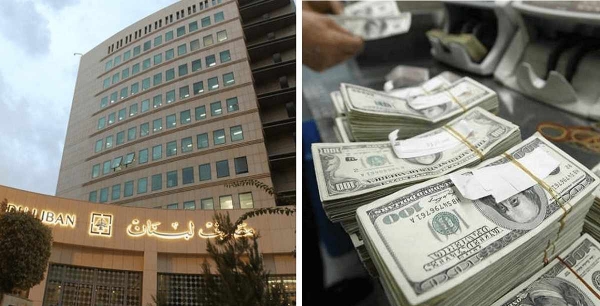July - The Arab Deterrent Force : Arab Start with a Syrian Ending
Circumstances
The Lebanese Civil War broke out in 1975 and took on large Arab and international dimensions fueled by the involvement of Palestinian armed groups in the fighting and the Syrian military intervention. In order to curb further Palestinian influence, the Syrians sided initially with the Phalanges Party and the National Liberal Party. Conversely, the Palestinians and their Lebanese allies, in particular Kamal Jumblat, branded the Syrian involvement in the events as a Syrian genocide and called for Arab intervention from Egypt and the Arab League in order to stop the Syrian forces.
Subsequently, the Arab Ministers of Foreign Affairs held a series of meetings in Cairo in July 1976 that yielded- among other things- the formation of a committee comprising representatives from Lebanon, Syria, Egypt, Tunisia and the Palestine Liberation Organization. Egypt and Tunisia were later replaced by Libya and the Kingdom of Saudi Arabia. The objective of the committee was to formulate a draft agreement to end the Lebanese conflict. The discussion focused on how to bring about the withdrawal of Syrian forces from Lebanon and to give an Arab guarantee for the Palestinians and their Lebanese allies, and thus paving the way for a Syrio-Palestinian reconciliation.
During the meeting held on Tuesday, July 13, 1976, the Arab Ministers of Foreign Affairs agreed on the following:
- To reaffirm, respect and be committed to the ceasefire
- To welcome the willingness of the Syrian and PLO delegations to begin to work immediately towards the normalization of their relationship
- To promote the Arab security force and reinforce it with the units, equipment and weapons necessary to ensure its missions and movements
- To provide and supply those affected by the Civil War in Lebanon with fuel, medication and food from all the Arab countries
The Arab peacekeeping force under Major General Mohammad Hassan Ghounaim began to receive reinforcements and deployed itself in a neutral zone between East and West Beirut starting Wednesday, July 21, 1976. This small-scale force, which later constituted the nucleus of the Arab Deterrent Force, could not stop the continuity of battles across the region, which resulted in the convening of a sexpartite Arab Summit in the Saudi capital, Riyadh in the presence of representatives from Lebanon (President Elias Sarkis had assumed office as a successor to Suleiman Frangieh), the Kingdom of Saudi Arabia, Kuwait, Syria, Egypt and the PLO. The Summit’s statement stipulated the following:
- Reinforcing the Arab security forces into becoming an Arab Deterrent Force operating inside Lebanon under the supreme command of the President of the Lebanese Republic in person and consisting of roughly 30,000 troops. Its functions shall be as follows:
- Imposing commitment to the ceasefire and deterring violators
- Maintaining domestic security
- Overseeing the withdrawal of gunmen where they were prior to April 13, 1975
- Implementing the Cairo Agreement
- Supervising the collection of heavy weapons
- Assisting the Lebanese authority, when necessary, in handling the public facilities and institutions.
- Declaring ceasefire and putting an end to the fighting between all parties across all of Lebanon starting from October 21, 1976 at 6:00 am.
- Setting up Arab Deterrent Force’s checkpoints after the establishment of buffer zones in the areas of tension.
- Withdrawing militants, collecting heavy weapons and putting an end to all armed manifestations according to a specific timetable.
- Implementing the Cairo Agreement and its appendices, especially regarding the presence of weapons and munitions inside the camps, the withdrawal of the armed Palestinian forces that entered after the start of events and an avowal by the PLO not to meddle in the internal affairs of any Arab country.
- Later on October 25, an Arab Summit Conference was held in Cairo and espoused the decisions of the Riyadh Summit.
Formation of the Arab Deterrent Force
The formation of the Arab Deterrent Force had been given much attention amidst the PLO’s desire to have troops from different Arab countries, particularly from Egypt, participating in the peacekeeping force in order to prevent Syrian monopoly. However, Egypt opted not to partake, and the Syrian troops who had already entered Lebanon were thus the most superior numerically, totaling roughly 27,000 members against 3,000 from other countries.
- Kingdom of Saudi Arabia: 700
- United Arab Emirates: 700
- Sudan: 700
- Yemen: 700
On November 1, 1976, President Elias Sarkis appointed Colonel Ahmad El-Haj (a pro-Fouad Chehab officer) as head of the Arab Deterrent Force
Deployment
The troops began their deployment and clashes erupted between the Syrian troops within the Arab Deterrent Force and the Christian parties and militias during the former’s positioning in the eastern areas. Emirati forces were distributed in Western Beqa’a and Saudi forces in Shiyyah and the area neighboring the airport before they moved to Dawra and Karantina. Yemeni troops positioned themselves in Al-Hadath and Al-Kafaat and Sudanese troops in Ain-Remmaneh- Shiyyah.
Discord and lack of coordination
Dissension soon erupted between Colonel Ahmad El-Haj and Syrian officers due to a conflict of responsibilities and a lack of coordination, leading El-Haj to give up his mission. While El-Haj was appointed Director General of the Internal Security Forces, President Sarkis and the High Syrian Command agreed to replace him by Lieutenant Colonel Sami el-Khatib who had fled to Syria in 1970 and lived there as a political refugee, fleeing the officers of Deuxième Bureau. Numerous battles were fought between the Syrian forces and the Lebanese Forces headed by Bashir Gemayel who launched what looked like a war to liberate Christian areas from Syrian occupation. A number of Lebanese Army officers advocated the secret scheme devised by Sheikh Bashir Gemayel, which resulted initially in sensitivities that escalated soon into attacks between the Lebanese Army and the Syrian troops. Most notable of these was the clash of February 21, 1978 at the Shukri Ghanem Army Barracks in Fayyadieh.
That morning, the Syrian forces set up a checkpoint in front of the said barracks, thus triggering alarm among the soldiers and officers. After the failure of mediation talks aimed at removing the checkpoint, the Lebanese Army units, under the command of Captain Samir El-Ashkar, opened fire at Syrian troops, killing thirteen and wounding thirty-six. In retaliation, the Syrian troops bombed the barracks leaving one officer dead and three soldiers injured.
The state of hostility between the Syrian and the Lebanese Forces, coupled with the Syrio-Palestinian convergence and the feeling amongst the leaders and members of Arab units that they were only a numerical complement to the Arab Deterrent Force, accelerated the withdrawal of these forces, especially after the visit of the Egyptian President Anwar Sadat. The Saudis were the first to retreat from the Arab Deterrent Force, followed by the Yemenis, the Sudanese and finally the Emiratis. By the end of May 1979, the Syrians were the only ones left, thus transforming what was once known as the Arab Deterrent Force into a Syrian Deterrent Force operating under the President of the Lebanese Republic in name only. The actual decisions were made in Damascus and the situation remained as such until 1982 when the Syrian forces withdrew from Lebanon following the Israeli invasion, bringing the mission of the Arab Deterrent Force finally to its end.








Leave A Comment